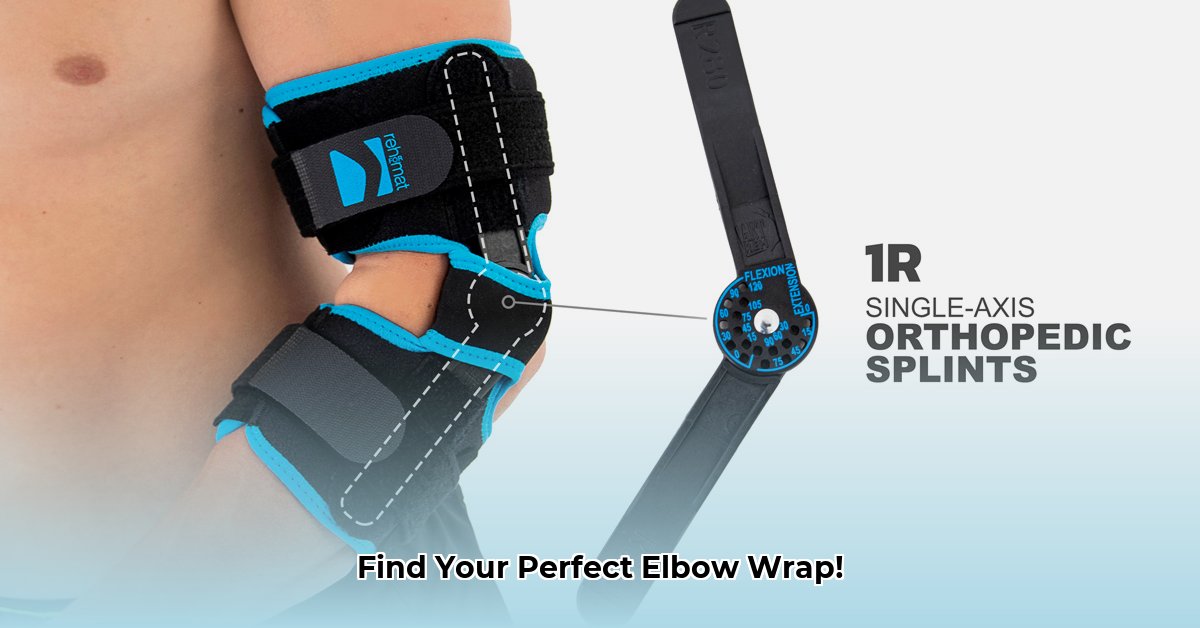Want to maximize your weightlifting performance and minimize the risk of elbow injuries? Choosing the right elbow wraps is crucial. This comprehensive guide provides detailed insights on selecting the perfect pair, regardless of your experience level. We’ll explore different materials, compression levels, closure systems, and optimal usage scenarios. Plus, we’ll cover essential care tips to extend the lifespan of your wraps. Elevate your lifting game and protect your elbows with this expert advice! For more on elbow support, check out [this helpful resource](https://chaztin.com/elbow-support/).
Demystifying Elbow Wraps: Your Guide to Optimal Selection in 2025
Selecting the right elbow wraps can significantly enhance your weightlifting, contributing to improved performance and injury prevention. Let’s delve into the key factors for identifying your ideal pair and understanding the benefits of joint support.
Decoding the Essential Features of Elbow Wraps
Differentiating between elbow wraps involves understanding several crucial features that influence their performance and comfort, including material composition, length, and closure mechanisms.
Material Composition: The material dictates the level of support and comfort.
- Cotton/Elastic Blends: Offer a balance of comfort and support, suitable for general weight training and lighter loads. The cotton component enhances breathability, reducing moisture buildup.
- Pure Elastic: Provides maximum support and compression, ideal for heavy lifting. Offers superior stability and reduces the risk of hyperextension.
- Nylon/Elastic Blends: Offer increased durability and resistance to wear and tear. Provides a balance of support and flexibility.
Length Considerations: The length of the wrap affects the amount of coverage and support provided.
- 40-inch Wraps: Suitable for most lifters, providing adequate support for a variety of exercises. Easier to maneuver and adjust.
- 50-inch Wraps: Offer greater coverage and support, ideal for heavier lifts and individuals seeking maximum stability. Allow for more customized wrapping techniques.
Closure Systems Explained: The closure system determines how securely the wraps stay in place and how easily you can adjust the compression.
- Hook-and-Loop (Velcro): Allows for precise adjustment of tightness, providing a customized fit. Durable and reliable, ensuring secure fastening during intense workouts.
- Elastic Loops: Simpler and quicker to use, but offer less adjustability. Suitable for individuals who prioritize speed and convenience, but may not provide sufficient support for heavy lifting.
- Tie Closure: Offers a highly customizable and secure fit, but requires more skill and time to apply. Preferred by experienced lifters who demand maximum control over compression.
Compression Levels: Compression provides joint stabilization.
- Low Compression: Ideal for warm-ups and lighter workouts. Provides minimal support while allowing for a full range of motion.
- Moderate Compression: Suitable for regular workouts, offering a balance of support and flexibility. Helps prevent strain and discomfort during moderate lifting.
- High Compression: Provides maximum support for heavy lifting, minimizing the risk of injury. Restricts movement to stabilize the joint and enhance performance.
Brand Comparison: A Pragmatic Assessment
Numerous brands, including Gymreapers, Iron Bull Strength, and Schiek, offer elbow wraps. However, the absence of standardized compression testing makes direct comparisons challenging. While we can highlight general strengths, this assessment is subjective due to limited objective data.
Gymreapers and Iron Bull Strength predominantly utilize pure elastic, emphasizing high compression for serious lifters. These wraps are designed for maximum support and stability during heavy lifts. Schiek offers a more diverse range of materials, including cotton/elastic blends, catering to individuals who prefer a less restrictive feel. These wraps provide a balance of comfort and support, suitable for a variety of exercises.
Tailored Guidance: Finding Your Perfect Fit
The optimal choice of elbow wraps depends on your lifting experience and training regimen. This tailored guide offers specific recommendations:
| Feature | Beginner | Intermediate | Advanced/Powerlifter |
|---|---|---|---|
| Elbow Wrap Length | 40 inches | 40-50 inches | 50 inches |
| Compression Level | Moderate | Moderate to High | High |
| Material | Cotton/Elastic Blend | Cotton/Elastic Blend or Pure Elastic | Pure Elastic/Nylon Blend |
| Closure Type | Hook-and-loop (Velcro) | Hook-and-loop (Velcro) | Hook-and-loop (Velcro)/Tie Closure |
| Ideal Use Case | General weight training, injury prevention | Heavier lifts, higher intensity, added support | Competitive powerlifting, maximum joint stability |
Maintenance Matters: Preserving Your Wraps
Proper care extends the lifespan of your elbow wraps and maintains their effectiveness.
- Gentle Washing: Hand wash in cool water with mild detergent. Avoid harsh chemicals and machine washing to prevent damage to the material and elastic properties.
- Air Drying: Allow to air dry naturally, away from direct sunlight and heat. This prevents shrinking and maintains elasticity.
- Proper Storage: Store in a cool, dry place to prevent moisture buildup and maintain shape.
Prioritizing Safety: Responsible Wrap Usage
While elbow wraps enhance support, misuse can lead to injury. Adhere to these safety guidelines:
- Snug Fit: Wrap firmly for support, but avoid excessive tightness that restricts circulation.
- Circulation Check: Ensure adequate blood flow by checking your pulse in the forearm after wrapping. Loosen the wrap immediately if circulation is compromised.
- Listen to Your Body: Discomfort indicates excessive tightness. Remove the wraps and rest if you experience any pain or numbness.
Elbow wraps are valuable tools for enhancing your weightlifting performance and joint health. Consult with a physical therapist or qualified weightlifting coach for personalized guidance and proper usage techniques. Prioritize safety and smart training practices to maximize the benefits and minimize the risk of injury.
- Your Perfect Bento Box Bag For Fresh And Tidy Meals - December 2, 2025
- Korean Meal Prep Made Easy For Delicious Weekday Meals - December 1, 2025
- Korean Food Meal Prep Makes Flavorful Weekday Meals Simple - November 30, 2025










